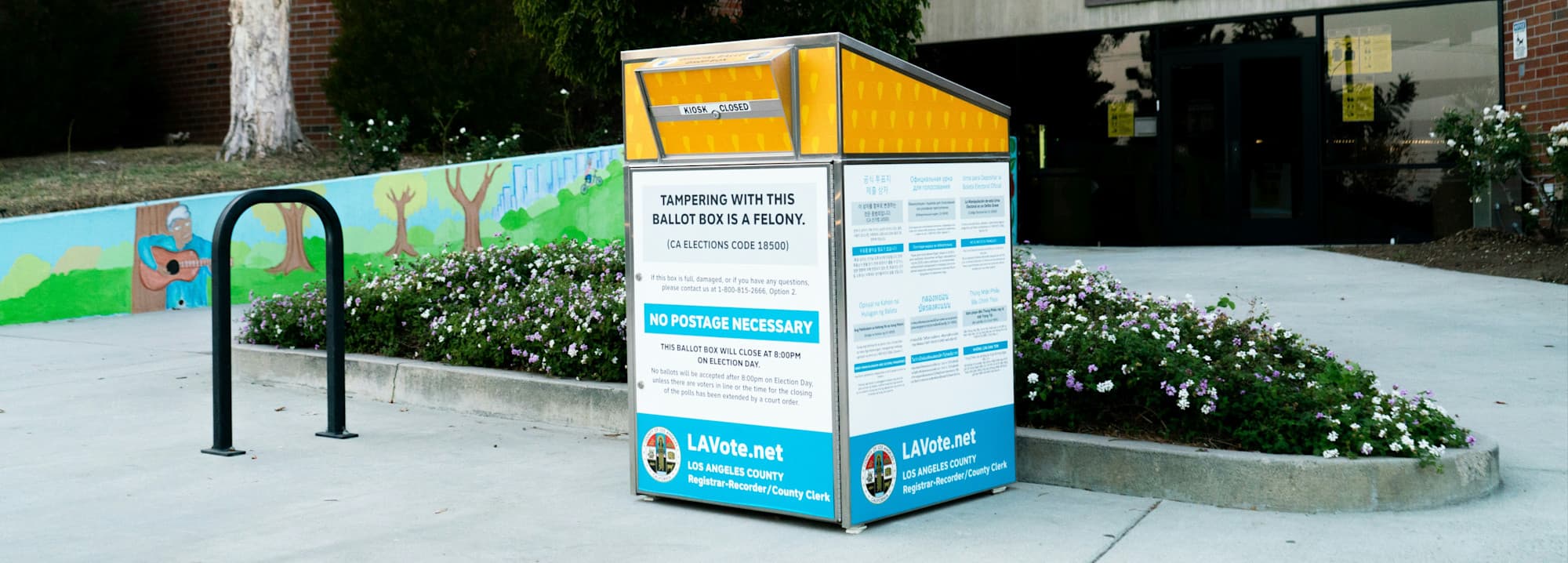
Ballot Harvesting: How It Works, and Why It Matters
When elections come down to just a few votes, how those votes are collected can shape the outcome. That’s why conversations about ballot harvesting, also called ballot collecting, ballot chasing, or third-party ballot collection, have become so heated.
But despite the controversy, the concept is straightforward: it’s about helping voters return their completed ballots. In this guide, we’ll explain what ballot harvesting is, how it works, where it’s legal, and how it fits into broader get-out-the-vote (GOTV) efforts that empower participation in democracy.
What Is Ballot Harvesting?
Ballot harvesting refers to the process of someone other than voters themselves collecting completed mail-in or absentee ballots and delivering them to an official drop box, election office, or polling location. The people collecting or harvesting ballots may be a trusted volunteer, family member, or campaign representative.
Some states use the term ballot collection instead, but the idea is the same: it allows a third party to ensure ballots make it safely to election officials before the deadline.
The goal is to make voting more accessible, especially for seniors, people with disabilities, or voters in rural areas who may have trouble reaching polling sites.
Ballot Harvesting vs. Ballot Collecting vs. Third-Party Ballot Collection
The terms are often used interchangeably, but the connotations differ:
Ballot collecting is the neutral term most election officials and policy groups use.
Third-party ballot collection is the formal phrase often used in legislation.
Ballot harvesting has become a politically charged term. Critics use it to imply large-scale or unethical collection, even though the process itself is legal in many states.
Understanding this language matters because how we talk about voting practices shapes public trust in elections. Using neutral terms like ballot collection helps center the conversation on access and accountability rather than partisan framing.
How Does Ballot Harvesting Work?
Each state sets the rules and processes for ballot collecting.
Generally, in the places where it’s permitted, ballot harvesting follows this process:
A voter completes their mail or absentee ballot. They fill it out, sign it, and seal it according to state instructions.
A designated person or organization collects the ballot. This could be a campaign volunteer, family member, community organizer, or other trusted representative.
The collector returns the ballot to an authorized location. They must submit it to an election office, drop box, or polling site within the required timeframe.
In some states, only immediate family members can collect ballots. Others allow broader participation by community or campaign volunteers. States that do allow ballot collection usually require collectors to sign forms confirming delivery, to prevent fraud and ensure transparency.
Which States Allow Ballot Harvesting?
Ballot collection laws vary widely across the country. Some states permit broad third-party collection; others tightly restrict or ban it altogether.
Some general examples of state laws regarding third-party ballot collection as of 2025 include:
States that broadly allow third-party ballot collection include California, Colorado, and Illinois.
States that allow limited collection, for example, by family members or caregivers only, include Florida, North Carolina, and Pennsylvania.
States that largely prohibit third-party ballot collection include Texas, Tennessee, and Alabama.
The rules differ dramatically from state to state, so if your campaign plans to assist voters with mail-in ballots, always confirm your state’s current election code first.
Why Is Ballot Harvesting Controversial?
The debate around ballot harvesting centers on two main issues: access and integrity.
Supporters argue that ballot collection:
Expands access for voters who face barriers to returning ballots on their own
Increases participation in underserved communities
Helps ensure every eligible vote counts
Opponents, however, raise concerns that:
Unscrupulous actors could mishandle or fail to deliver ballots
Campaigns might pressure voters when collecting ballots
Weak safeguards could undermine confidence in election results
While verified instances of ballot collection fraud are rare, the perception of risk has driven tighter regulations in many states. Balancing convenience with accountability remains a key challenge for policymakers.
The Impact of Ballot Harvesting
When conducted transparently and legally, ballot collection can increase voter participation, especially among seniors, people with disabilities, and rural voters. In states where it’s permitted, campaigns and community groups often integrate ballot collection into their GOTV strategies.
For example, campaigns might:
Organize neighborhood ballot drop-off drives
Educate voters on how to safely return ballots
Offer transportation or door-to-door assistance to ensure timely delivery
In these contexts, ballot collection becomes part of a larger civic engagement ecosystem, similar to voter registration drives or door-to-door canvassing. The focus isn’t on “harvesting” votes for a side, but on ensuring that every voter who wants to participate can do so effectively.
LEARN MORE: Explore more ways to mobilize your voters.
Ballot Collection and GOTV: Working Together
Like texting, canvassing, and phone banking, ballot collection is one of many tools in a campaign field plan used to close the gap between voter intention and voter action.
When done correctly, it can:
Remove logistical barriers. Voters without reliable transportation or mobility access can still have their ballots counted.
Increase turnout in local elections. These races often have the lowest participation rates and are most affected by accessibility barriers.
Build community trust. When handled by nonpartisan groups or transparent campaigns, ballot collection can reinforce a culture of civic care.
Grassroots and Independent candidates, in particular, can use legal ballot collection to empower supporters in hard-to-reach areas, turning accessibility into engagement.
Transparency and Trust Are Key
No matter your campaign’s size or scope, ethical ballot collection should always follow three core principles:
Know and follow your state’s rules. They can change frequently.
Train volunteers carefully. Every collector should understand how to handle and submit ballots securely.
Communicate openly with voters. Let people know when, where, and how their ballot will be delivered.
Transparency builds confidence, not just in your campaign, but in the democratic process itself.
LEARN MORE: Gearing up for GOTV? Learn how to recruit volunteers to make your outreach a breeze.
Every Voter, Every Ballot, Every Voice
Ballot harvesting, or ballot collection, is ultimately about accessibility and trust. It’s one piece of a much larger puzzle: helping every eligible voter participate in elections.
In a healthy democracy, accessibility and integrity go hand in hand. Transparent, well-regulated ballot collection can remove real barriers for seniors, rural voters, people with disabilities, or anyone who might struggle to get to the polls, while still protecting the security of every vote.
For Independent and grassroots campaigns, understanding how ballot collection fits into broader GOTV efforts isn’t just good strategy, it’s good citizenship. Helping more people cast their ballots is how we strengthen democracy from the ground up.
At GoodParty.org, we’re here to help you do just that. From free tools and campaign training to voter education and GOTV resources, we empower candidates and communities to make broader participation possible and make every vote count.
Photo by Oxana Melis on Unsplash
Ready to empower your community and get out the vote? Explore GoodParty.org’s free and low-cost campaign tools, built to support your campaign from launch to election day and beyond.

